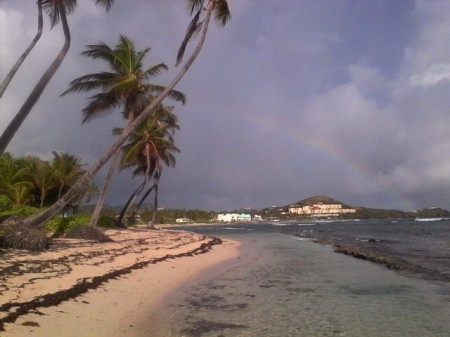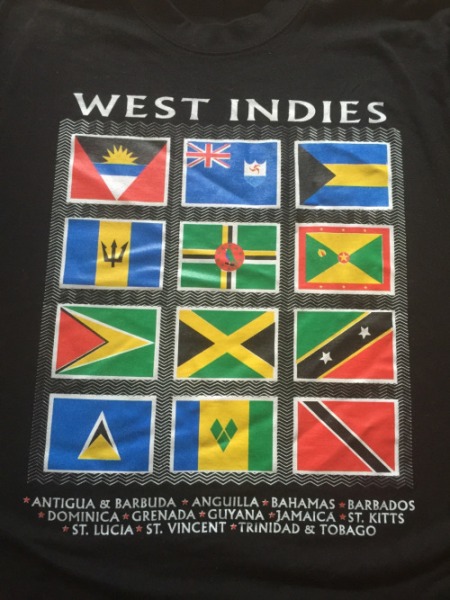During December 2018, this blog registered a few pingbacks from the University of Chicago Press Journal HAU: Journal of Ethnographic Theory. “Without Impunity,” which links one of my blog posts as a citation, is an examination of the #MeToo movement and staunchly in the vein of won’t-someone-please-think-of-the-men in its scope. The article is concerned with the “anarchic” aspects of outing reputed sexual harassers and abusers, “ruthless simplifications and magnifications” which unfairly malign men, false accusations, and ultimately decides that “norms have been destabilized,” and “the scales tip toward mob rule.” In an essay concerned with wrestling with context: of kissing and hugging, compliments and erotic situations — it is irksome that my writing is then decontexualised by Thomas Hylland Eriksen in this very piece.
The quote “I love West Indian men’s carriage and swagger, their walk and heteropatriarchal expressions of protection and care. I love how they hail up one another and embrace, give each other bounces and touch thumbs. I love some of the many things they share all up and down the archipelago” from “Why I love to Love and Hate to Love West Indian Men,” is very specific to this particular essay’s unpacking of some aspects of West Indian masculinity, lovingly.
In that very same essay, I also wrote “there is plenty that I don’t love about West Indian masculinity too, by the way. But right now, for the time being, I just want to sit on the verandah and watch them gallery deyself.” It is me giving some West Indian men a bligh and bigging them up. This does not give carte blanche to run and reframe that quote with a lead-in of “some even see complementary gender roles as natural and good.” I actually don’t see gender roles that simplistically at all, and I make no estimations of that kind in that essay or in any other writing on my blog. I have struggled with “traditional” expectations of West Indian womanhood, which I also indicated in that essay. West Indian masculinity is socially constructed in ways that are absolutely detrimental to women, other men and gender nonconforming folks. I am not a nameless “some”; I am one black West Indian feminist writing a blog, and I have a name.
Although my first name (and email) can be found clearly on my blog’s about page, and my full name on the home page, two posts down, nowhere am I named in Eriksen’s essay. I am “a female Trinidadian blogger” whose words are used to bolster hand-wringing about the #MeToo movement, a positionality I am diametrically opposed to. My writing dispossessed from its context and reconstituted by someone who couldn’t even bother to muster the effort to cite me by name, or does not cite me by name but cites everyone else by name, intentionally. Writing cultural criticism outside of academia means reckoning with notions of hierarchical knowledge; it also means seeing how the rigor and attention with respect to context and naming that Eriksen employs to the work of others, compared to mine, is telling. Most of all, black feminist women’s intellectual labour is not just there for the cherry-picking, to link to and quote anonymously whether we have institutional affiliation or not.
In fact, why find a West Indian feminist writer to quote in such an essay? Why not quote a woman whose politics are actually engaged in disseminating #MeToo backlash because those women do exist. I find it hard to believe that an academic, a winner of a research prize, would read one blog entry, never look around to get a sense of my other writing then trot off deciding on a citation. If the takeaway from any encounter with the gender, culture, music, sexuality and lived life that I have written about for years is gender roles are “natural and good”: you are not reading me correctly, you have missed so many points and all the nuances, and you should probably not quote my work without a grasp of this.
Brilliant cultural commentary, gender and sexual analysis, and content curation is consistently being done by black women online; women like Amanda T. McIntyre, Aysha Bee, La Tosha Hart, Ro-Ann Mohammed, Takeallah Rivera, and Riya Jama to name a few. These include Facebook statuses, images, vlogs, other commentary eventually expanded into longer pieces, or cross posted as Tweets or on Tumblr, and the value of their necessary, relevant clapbacks, resistance and truth-telling should not be underestimated.
There have been multiple instances of content created by Aysha and Riya going viral via other people, but first the content is decontextualised from the original creator who is pro-black woman and very intentional about that, then they are unnamed as source, so their work multiplies into the stratosphere of the interweb, “sparking conversations” they should be “grateful” for, but the work is pointedly lifted with no attribution. When they speak up about it, there are many people who still don’t grasp that black women are entitled to and have every right to be properly credited for their writing, particularly when their names, usernames and blogs can be easily found. Naming is important; and saying, well, that’s how it is with the internet is not an excuse. If you can find writing to directly quote from and repost — you can find the original with the same energy.
Eriksen’s decision to use the Caribbean as a touchstone for the global reach of #MeToo loops from a couple whose business is out on the road, to a misconstrued quote from myself, but the region, en masse, has not engaged in #MeToo on a wide scale. Some West Indian women undoubtedly have joined the call-outs of predatory behaviour, but it has not been a concerted undertaking. While Tarana Burke‘s movement is the originator and predates the hashtag of the same name, the Caribbean has its own sexual violence and harassment activism preceding the onslaught of the second incarnation of #MeToo.
The Caribbean’s homegrown reckoning came with #LifeInLeggings, an on-going movement and hashtag created by Ronelle King from Barbados. Localized movements, actions and marches created by women living in the Caribbean wracked islands with an unflinching pronouncement that women had had enough: of the sexual harassment, street harassment, sexual violence and abuse. West Indian women studying away or living in the diaspora also joined the rise-up on Facebook and on Twitter. We shared posts, commented and messaged one another. So much came pouring out. And yes, men were also publicly named and shamed and even hit with a tambourine. A livestream of a Life in Leggings public discussion from Port of Spain, Trinidad, unmasked a local man as a serial sexual harasser to an audible gasp of persons in attendance. Consequently, since then, said man, his social status, and business venture seem to be doing just fine.
Meanwhile, Eriksen presents the region in contrast to the bloodthirst of #MeToo of the Global North, a space where public arguments are lo-fi #MeToo ensuring “witnesses are present,” “full context is known,” and this Trini feminist blogger thinks all is fine and wonderful with gender roles. Yeah, no. The boldface erasure of my entire worldview to use as support for permutations over #MeToo is upsetting. It’s not a project I would have ever wanted my words to be entwined with. Between the anonymous in-text citation and the fact that my words are even in there, I don’t know which is more aggravating. Though honestly, probably both, to varying degrees.
Eriksen is adamant that #MeToo is “murky terrain” because the movement doesn’t just focus on rape, “a punishable crime in most societies,” “but also on harassment and unwanted sexual attention” as though the three are widely disparate acts. From lived experiences, many women know how easily a man can move from small talk to harassment to sexual violence, from unsolicited comments to subtle or direct sexual coercion, and the shape-shifting dance of cultural negotiations and dangers means that one is never far from the next. You give some men an inch, they will take a mile and then some. Trust and believe that.
Even in parts of North America, men are barely being held accountable for acts of rape, allegedly, a punishable crime. Brock Turner and heaps of unprocessed rape kits both occur after all. What that means for women and girls of the Global South is much, much worse, and that’s not because the men are all brutes, but the existence of rape laws does not serve to address sexual crimes or bring justice for most women — anywhere. Mentioning such laws cannot be done without acknowledging systemic barriers in place and overarching patriarchal power structures, all of which necessitate movements like #LifeInLeggings and #MeToo to reframe narratives, call ish out, force systemic overhauls and empower survivors. Who else is going to do that? Societies that often blame and shame women? Police? Law enforcement in the U.S. has an issue with rape of its own.
For black women, black queer or lesbian women, queer women of colour, trans women, poor women, women with no immigration status, wherever they are, the potential for legal redress is even worse. A woman in a coma under residential facility care was not even safe. The amount of sexual violence that women and girls face around the world, precisely for being who they are is tremendous. #MeToo is not “murky,” it is a clear signifier of the kinds of interconnected and multiplicities of dangers women face.
Another important aspect of Life in Leggings was showing West Indian men just how much rape and sexual assault proliferated among people they knew. One Barbadian man, Corey Sandiford, noted on Facebook:
I used to think rape was mostly about a mentally disturbed man hiding in dark clothes at night, waiting to ambush a woman walking alone. Just like the movies.
Only to get older and be appalled at the number of women who have casually mentioned to me – personally and professionally – that they were sexually violated by someone they knew when they were younger. A family member. A friend who took advantage of a situation. A school teacher. Someone from church. Not “casual” because they have a lax attitude to what happened mind you – but casual because they managed to make peace with it. . . .
Anger, I’m not sure yet at whom or what, or how to direct it. I don’t know what the ideal intervention point is, or how I can help protect. But #Barbados and the #Caribbean are rife with rape stories.
The vast majority of men are not, in fact, being chased by a hashtag wielding mob with scant evidence. Many continue to face no consequences for their actions whatsoever. And if it seems that sketchy, sexually-tinged encounters trail behind so many men wherever they go, perhaps you are grossly underestimating many men’s entitlement to accessing women, and the tacit, toxic messages they’ve received from society for years — from childhood.
That this is being undone is good. I support women, abhor sexual violence and I stand with survivors. My blog quote being used by Thomas Hylland Eriksen does not change any of this. I remain committed to feminist engagement, creative work and unlearning nonsense that no longer serves me. I am rooted in a community who has shown me more than once how we are the ones we have been waiting for. I will continue to take up space, here on a blog post, or elsewhere, demanding clarity and decrying blatant disrespect.
I will not be erased.








